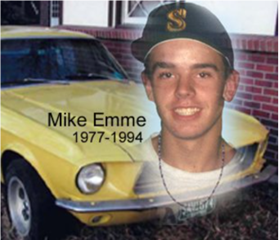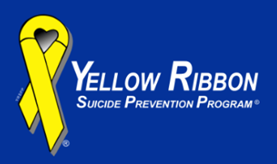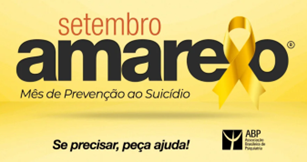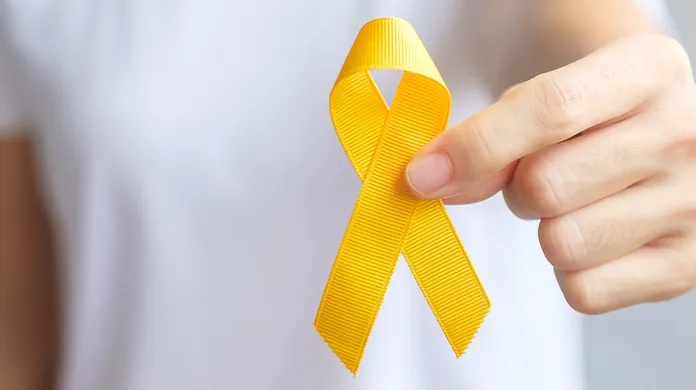[Português e Inglês]
Não sei se você sabia, mas é de conhecimento mundial, e não só no Brasil, que setembro é o mês dedicado à valorização da vida e de prevenção ao suicídio de diversas formas.
Mas vocês já se perguntaram como tudo começou ou, ainda, porque foi escolhido esse mês e essa cor?
A gente te explica isso e, ainda, te traz mais informações sobre as campanhas incríveis que não param!
Porque Setembro e Porque Amarelo
A origem do setembro amarelo e todo esse movimento de conscientização contra suicídio começou com a história de Mike Emme, nos Estados Unidos. O jovem era conhecido por sua personalidade carinhosa e habilidade mecânica, tendo como sua marca favorita de carro um Mustang 68 que ele mesmo restaurou e pintou de amarelo brilhante. Mike ficou cada vez mais conhecido por suas habilidades na mecânica e por ajudar os outros, assim ficou conhecido como o “Mustang Mike”.
Mike era um garoto pró ativo, sempre disponível a ajudar os outros e NUNCA pediu ajuda em relação as suas dores internas.
No entanto, às 23:52 do dia 8 setembro de 1994 os pais de Mike chegaram em casa e se depararam com o Mustang Amarelo parado na frente da casa, como de costume, mas Mike estava dentro do carro, contudo, já sem vida. Ele havia dado um tiro em si mesmo, e havia um bilhete perto do corpo:
“Não se culpe, mamãe e papai, eu amo vocês
Amor,
Mike 23:45”.

Mike, com apenas 17 anos de idade, cometeu suicídio sete minutos antes de seus pais aparecerem.
Pela forma como tudo ocorreu, a família e amigos concluíram que o Mike tomou essa atitude em um momento de seu mais profundo desespero, tanto que até no bilhete, tão sucinto, ele não sabia as palavras a dizer ou não sabia como deixar alguém saber que estava com problemas e precisava de ajuda.
Considerando a forma como Mike agia perante as outras pessoas, infelizmente nem a família, nem os amigos dele, perceberam os sinais de que ele pretendia o suicídio.
No funeral, em demonstração de carinho e sabendo o amor que Mike tinha pelo seu Mustang Amarelo Brilhante, a família e os amigos montaram uma cesta de cartões com fitas amarelas brilhantes com a seguinte mensagem: “Se precisar, peça ajuda”. No fim, nenhum cartão havia sobrado e a ação ganhou grandes proporções e expandiu-se pelo país.
Como a Campanha da Fita Amarela começou
O programa começou em 1994 em resposta aos apelos sinceros dos amigos e familiars de Mike Emme.
Os bilhetes em papel com fita amarela brilhante com a frase – “por favor, não faça isso, por favor, fale com alguém” junto com números de telefone para quem ligar para obter ajuda, distribuídos durante o funeral de Mike, foram redistribuídos pelos próprios adolescentes “para todos os lugares”, para amigos e entes queridos.
Dentro de três semanas, chegou a notícia de uma menina que obteve ajuda quando leu a “mensagem amarela” que havia recebido pelo correio por sua professora e recebeu ajuda.
O efeito cascata tinha começado: uma ponte amarela brilhante que liga os necessitados aos que ajudam.
Diversos jovens passaram a utilizar cartões amarelos para pedir ajuda à pessoas próximas.
Assim nasceu “Yellow Ribbon – Suicide Prevention Program” (Fita Amarela – Programa de Prevenção ao Suicídio).

A fita amarela foi escolhida como símbolo do programa que incentiva aqueles que têm pensamentos suicidas à buscarem ajuda.
Inclusive, no site do programa (https://yellowribbon.org) é possível verificar quantos cartões com fitas amarelas foram distribuídos.
Até 15/09/2023 foram distribuídos cerca de 20.723.759 cartões com fitas amarelas.
Em 2003, a Organização Mundial da Saúde (OMS) instituiu o dia 10 de Setembro para ser o Dia Mundial da Prevenção do Suicídio e o amarelo do Mustang de Mike é a cor escolhida para representar essa campanha.
Setembro Amarelo no Brasil
Aproveitando a data mundial, a campanha Setembro Amarelo foi criada no Brasil em 2015.
O projeto é um trabalho conjunto do CVV (Centro de Valorização da Vida), CFM (Conselho Federal de Medicina) e ABP (Associação Brasileira de Psiquiatria), com a proposta de associar a cor ao mês que marca o Dia Mundial de Prevenção do Suicídio (10 de setembro).
Outro passo importante para o tema aqui no Brasil foi a criação da Política Nacional de Prevenção da Automutilação e do Suicídio, instituída através da Lei nº 13.819, de 26 de abril de 2019.
O objetivo é conscientizar sobre a prevenção do suicídio e dar visibilidade à causa. Ao longo dos últimos anos, escolas, universidades, entidades do setor público e privado e a população de forma geral se envolveram neste movimento.
Monumentos como o Cristo Redentor (RJ), o Congresso Nacional e o Palácio do Itamaraty (DF), o Estádio Beira Rio (RS), o Elevador Lacerda (BA) e pontos importantes na Cidade de São Paulo, participam da campanha sejam com luzes ou faixas na cor amarela.
A campanha de 2023
Em 2013 a Associação Brasileira de Psiquiatria – ABP deu notoriedade e colocou no calendário nacional a campanha internacional Setembro Amarelo®. E, desde 2014, a ABP em parceria com o Conselho Federal de Medicina – CFM divulgam e conquistam parceiros no Brasil inteiro com a campanha.
O dia 10 do mês é, oficialmente, o Dia Mundial de Prevenção ao Suicídio, mas a iniciativa acontece durante todo o ano.
Atualmente, o Setembro Amarelo® é a maior campanha anti estigma do mundo e em 2023, o lema é “Se precisar, peça ajuda!” e diversas ações já estão sendo desenvolvidas.
Confira algumas delas no site oficial: https://www.setembroamarelo.com/
Se pensar em suicídio busque ajuda
É importante que as pessoas que estejam passando por momentos de crise busquem ajuda. O apoio da família e amigos é sensacional e essencial, porém, é necessário um acompanhamento psicológico para que as pessoas consigam falar sobre o que sentem.
Além do Projeto Yellow Ribbon, no Brasil, contamos com o Centro de Valorização à Vida (CVV), que é um ponto de apoio seguro com profissionais capacitados.
Esse é um projeto que fornece apoio emocional e prevenção do suicídio. Através de telefone, e-mail e chat 24 horas todos os dias da semana, eles atendem de forma voluntária e gratuita todos que precisam conversar. O serviço é totalmente sigiloso.
O site do CVV é www.cvv.org.br.
E se você acha que alguém que está precisando de ajuda, não tente prestá-la, entregue um bilhete com a fita amarela “por favor, se precisar, peça ajuda, por favor fale com alguém” junto com número de telefone da CVV que é 188 ou indique esse texto para ela entender mais sobre o tema e procurar ajuda profissional!

VERSÃO EM INGLÊS
SEPTEMBER YELLOW: how the campaign began!
I don’t know if you knew, but it is known worldwide, not only in Brazil, that September is the month dedicated to valuing life and preventing suicide in various ways.
But have you ever wondered how it all started or why this month and this color were chosen?
We’ll explain that to you and also bring you more information about the incredible campaigns that never stop!
Why September and Why Yellow:
The origin of September Yellow and this whole suicide awareness movement began with the story of Mike Emme in the United States. The young man was known for his caring personality and mechanical skills, with his favorite car brand being a 1968 Mustang that he restored and painted bright yellow himself. Mike became increasingly known for his mechanical skills and for helping others, earning him the nickname “Mustang Mike.”
Mike was a proactive young man, always available to help others, and NEVER asked for help with his inner pain.
However, at 11:52 PM on September 8, 1994, Mike’s parents came home and found the Yellow Mustang parked in front of the house, as usual, but Mike was inside the car, lifeless. He had shot himself, and there was a note near his body:
“Don’t blame yourselves, Mom and Dad, I love you.
Love,
Mike 23:45.”
Mike, at just 17 years old, took his own life seven minutes before his parents arrived.
By the way it all happened, family and friends concluded that Mike took this action in a moment of deep despair, to the extent that even in the brief note, he didn’t know what words to say or how to let someone know he was in trouble and needed help.
Considering how Mike acted toward other people, unfortunately, neither his family nor his friends noticed the signs that he intended to commit suicide.
At the funeral, as a demonstration of affection and knowing the love Mike had for his Bright Yellow Mustang, family and friends set up a basket of cards with bright yellow ribbons and the message: “If you need help, ask for it.” In the end, no cards were left, and the action gained momentum and spread across the country.
How the Yellow Ribbon Campaign Started:
The program started in 1994 in response to the heartfelt pleas of Mike Emme’s friends and family.
Paper notes with bright yellow ribbons and the phrase “Please don’t do this, please talk to someone” along with phone numbers for getting help, which were distributed during Mike’s funeral, were redistributed by teenagers “everywhere,” to friends and loved ones.
Within three weeks, news arrived of a girl who got help when she read the “yellow message” she had received in the mail from her teacher. The cascade effect had begun: a bright yellow ribbon connecting those in need with those who help.
Many young people began using yellow cards to ask for help from those close to them.
Thus, the “Yellow Ribbon – Suicide Prevention Program” was born.
The yellow ribbon was chosen as the symbol of the program that encourages those with suicidal thoughts to seek help.
In fact, on the program’s website (https://yellowribbon.org), you can check how many cards with yellow ribbons have been distributed.
As of September 15, 2023, approximately 20,723,759 cards with yellow ribbons have been distributed.
In 2003, the World Health Organization (WHO) designated September 10 as World Suicide Prevention Day, and the yellow of Mike’s Mustang is the chosen color to represent this campaign.
Yellow September in Brazil:
Taking advantage of the global date, the Yellow September campaign was created in Brazil in 2015.
The project is a joint effort of CVV (Centro de Valorização da Vida – Life Valuation Center), CFM (Conselho Federal de Medicina – Federal Council of Medicine), and ABP (Associação Brasileira de Psiquiatria – Brazilian Association of Psychiatry), with the proposal to associate the color with the month that marks World Suicide Prevention Day (September 10).
Another important step for the topic in Brazil was the creation of the National Policy for the Prevention of Self-Mutilation and Suicide, established by Law No. 13,819, on April 26, 2019.
The goal is to raise awareness about suicide prevention and give visibility to the cause. Over the past few years, schools, universities, public and private sector entities, and the general population have become involved in this movement.
Monuments such as the Christ the Redeemer (RJ), the National Congress and Itamaraty Palace (DF), Beira Rio Stadium (RS), Elevador Lacerda (BA), and important points in São Paulo participate in the campaign with lights or yellow banners.
The 2023 Campaign:
In 2013, the Brazilian Association of Psychiatry – ABP brought notoriety to and put the international campaign September Yellow® on the national calendar. And since 2014, ABP, in partnership with the Federal Council of Medicine – CFM, has been promoting and gaining partners throughout Brazil with the campaign.
The 10th of the month is officially World Suicide Prevention Day, but the initiative takes place throughout the year.
Currently, September Yellow® is the world’s largest anti-stigma campaign, and in 2023, the motto is “If you need help, ask for it!” and various actions are already being developed.
Check out some of them on the official website: https://www.setembroamarelo.com/
If You’re Thinking About Suicide, Seek Help:
It is important for people going through crisis moments to seek help. The support of family and friends is fantastic and essential, but psychological support is necessary for people to be able to talk about their feelings.
In addition to the Yellow Ribbon Project, in Brazil, we have the Life Valuation Center (CVV), which is a safe support point with trained professionals.
This is a project that provides emotional support and suicide prevention. Through phone, email, and chat 24 hours a day, seven days a week, they provide voluntary and free assistance to anyone who needs to talk. The service is completely confidential.
The CVV website is www.cvv.org.br.
And if you think someone needs help, don’t try to provide it, hand them a yellow ribbon card that says, “Please, if you need help, ask for it, please talk to someone,” along with the CVV’s phone number, which is 188, or share this text with them to learn more about the topic and seek professional help!
Escrito por: Natália Pereira Neto, professora na Idioma Independente em São Paulo-SP
Para contato: 11 98069-9757, nataliapereiraneto.ii@gmail.com

